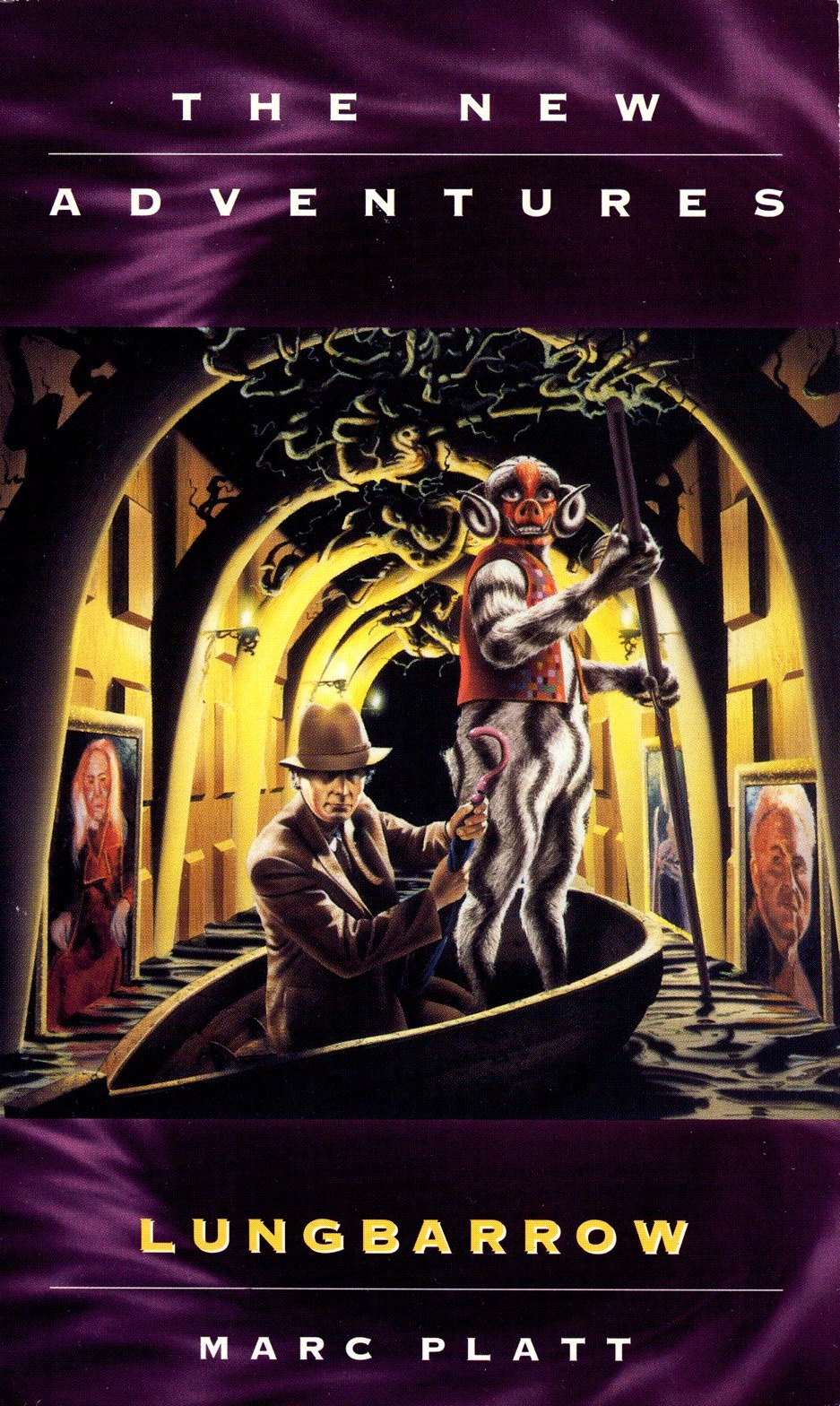 Story: The Doctor returns to his homeworld of Gallifrey. But by the worst luck of the draw, the TARDIS has brought him to the forgotten and buried, but not abandoned, House of Lungbarrow – the ancestral home of the Doctor’s Time Lord family, most of whom are trapped there, doomed to spend their remaining regenerations trying to eke out a barren existence until they finally die.
Story: The Doctor returns to his homeworld of Gallifrey. But by the worst luck of the draw, the TARDIS has brought him to the forgotten and buried, but not abandoned, House of Lungbarrow – the ancestral home of the Doctor’s Time Lord family, most of whom are trapped there, doomed to spend their remaining regenerations trying to eke out a barren existence until they finally die.
Review: This penultimate entry in the New Adventures series of original Doctor Who novels marks the final literary appearance – well, sort of – of the seventh incarnation of the Doctor (as played on TV and briefly in the 1996 movie by Sylvester McCoy). It’s a long-awaited and legendary storyline, which was briefly considered for inclusion in the final year of Doctor Who’s life as a BBC television series which evolved (appropriately enough) into the broadcast episode Ghost Light.
This book delves into numerous aspects of Time Lord society which are just as revolutionary to the Doctor Who concept as the earlier revelations about the Doctor’s homeworld seen in several episodes of the television series. Building on a few of the final televised episodes and many previous New Adventures, as well as setting the stage for the seventh Doctor’s appearance in the movie (which had aired a year before the book’s publication), “Lungbarrow” doesn’t spend a lot of time allowing the reader to catch up. It assumes that you know that a dark secret has been bubbling up toward the surface of the seventh Doctor’s personality, and assumes that you’re up-to-date with the New Adventures’ concept of the Time Lords as a genetically engineered society which long ago gave up procreation. It assumes that you know who Romana is, and why she’s now the President of Gallifrey. It assumes that you know who Ace is, why she is now called Dorothee, and why she has a time-hopping motorcycle. It assumes that you know who Leela is, who Andred is, and why there are two robots called K-9 living among the Time Lords.
Now, I’ve seen most of the existing Doctor Who TV episodes, and have read many – but by no means all – of the New Adventures (and fewer books of the related Missing Adventures series, the first of which apparently explained how Romana got back to N-Space, returned to Gallifrey, and took office… which was a complete mystery to me). But by missing such books, you’re bound to be missing at least a few clues as to why certain characters are who and where they are in “Lungbarrow”. This is not a book to start with if you’re new to the New Adventures.
The Doctor’s family is an interesting assortment of characters, though it seems as if Wednesday Addams is bound to pop out of the woodwork at some point; after all, Owis – a cousin who was woven from the genetic loom to replace the Doctor after his flight from Gallifrey – sounds a lot like Pugsley. The rest of the cousins are suitably creepy, especially Glospin. But you’ll have to read the book if you want to learn more about him.
In the name of trying to tie up the New Adventures’ continuity with the 1996 TV movie which saw the end of the seventh Doctor, “Lungbarrow” seems to set up numerous non-sequitur storylines. Why does the Doctor leave Chris Cwej and Ace on Gallifrey? Because in the movie, we see him traveling without any companions. What is the secret mission which Romana must order the Doctor to carry out? To retrieve the remains of the Master – which is what he has just finished doing when the movie opens. Why does the Doctor “fold” and then restore the internal dimensions of the TARDIS? To account for the vast changes in the TARDIS set as seen in the movie. What makes the Doctor different from the rest of the Gallifreyan race? According to the movie, he’s half-human.
“Lungbarrow” sometimes overdoes the retroactive continuity, when in some cases it would have been just as well to leave these things open. Companions have disappeared without a farewell scene before, and the TARDIS has changed its appearance more often than its owner, both without explanation. This is one of those cases where “retconning” is limiting – there’s no point in wasting all that space on exposition for an entirely separate story. Still, that aside, it is nice to see that the New Adventures did take the movie into account at all, since the movie’s place – or lack thereof – in the Doctor Who canon is a subject of fan debate even now. Just like “Lungbarrow”, in fact.
Year: 1997
Author: Marc Platt
Publisher: Virgin
Pages: 256

